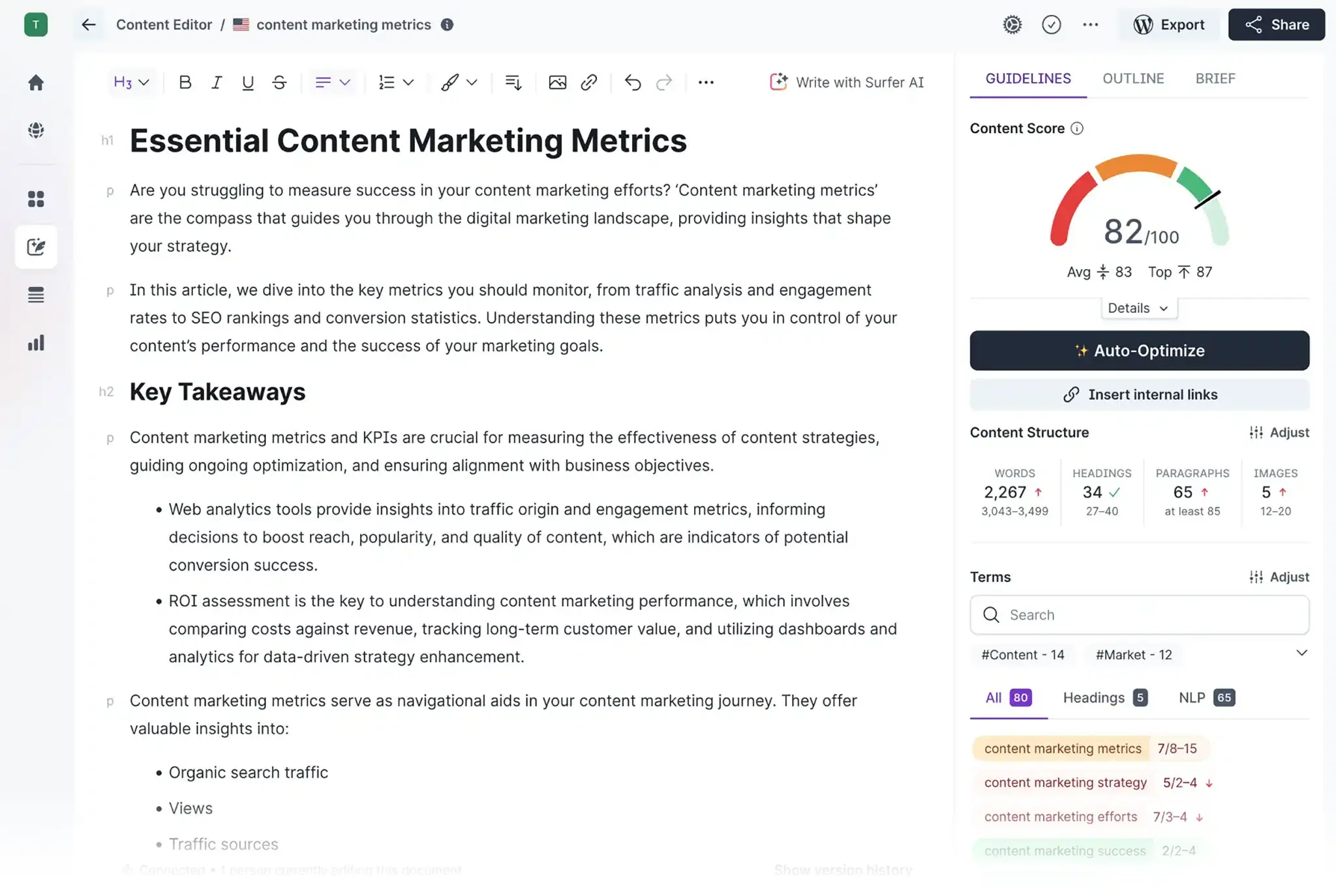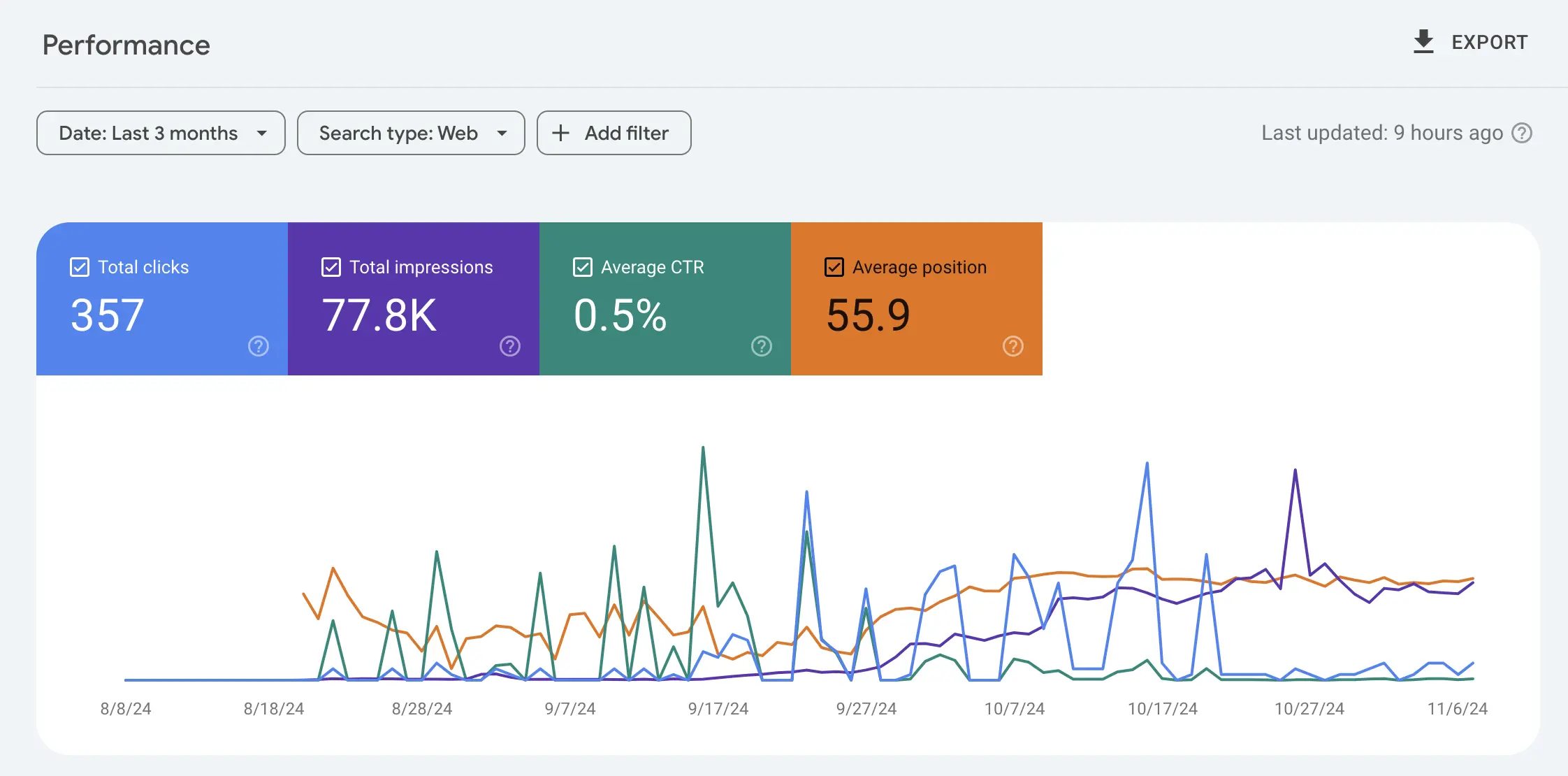Organic SEO is like a magnet for free, targeted website traffic.
Imagine having a steady flow of people visiting your site—without paying for every single click. That’s the magic of organic search optimization! Once you’ve set up a solid SEO foundation, your site keeps attracting visitors over time, with no need for ongoing ad spend.
But what exactly does it take to make organic SEO work?
It’s not just about keywords or backlinks; it’s a mix of smart tactics and a clear understanding of how search engines rank content. When done right, organic SEO can turn your website into a destination users naturally find.
In this guide, we’ll break down the essentials of organic SEO and uncover the strategies that can help your site climb the search results and keep those clicks coming in.
What is Organic SEO?
Organic SEO, or just SEO, is all about boosting a website’s traffic through the free listings on search engines.
These “free” listings are earned by creating content and optimizing it to match what people are searching for, rather than paying for ad space.
Think of it this way: if you’re a lending company, you’d want your website to pop up at the top when someone searches “small business loans” or “personal loans.” Getting those top spots means you’re reaching people actively interested in what you offer.
When done right, ranking well for these searches brings in organic traffic from people already searching for your services—potential customers ready to explore what you have to offer. It’s a steady way to grow your business without spending on ads!
Why Organic Search Engine Optimization Is a Game-Changer for Website Owners?
Here’s why organic optimization is a must-have for anyone running a website:
1. It Attracts the Right Crowd
With organic SEO, you’re not just getting any visitors—you’re getting people who are actively looking for what you offer. By ranking well for specific keywords, your site shows up just when they’re ready to make a decision.
Picture someone searching for “sneakers.” Chances are, they’re genuinely interested in learning to play. The top website that rank high in these search results are tapping into a consistent flow of interested students visiting their sites, often ready to sign up for classes.

Organic SEO is like putting a sign right where the right people are already looking. That’s the real power of it!
Certain types of organic search terms show that people are ready to buy, making them valuable for businesses to rank for. If you’re in an industry like shoe making, for instance, terms like these can bring in customers:
- Affordable sneakers
- Popular sneaker brands
- Sneakers for running
- Casual sneakers for everyday wear
- Top-rated sneakers
- Sneakers on sale
- Men’s trendy sneakers
- Women’s stylish sneakers
Websites that rank well for terms like these are likely to see a boost in sales.
But organic SEO goes beyond just sales; it’s also a fantastic way to build up your brand and establish authority in your field. When your site pops up in search results for related topics, people begin to recognize your name, even if they’re just browsing or researching. This is especially useful for products or services that need a bit more time and consideration before purchase.
Take this article, for example. It’s all about organic SEO, but it’s also a way for people to discover our link-building services. By providing helpful information, we’re connecting with potential clients who might need our expertise down the line.
2. Affordable and Long-Lasting
Organic SEO is one of the most cost-effective ways to bring visitors to your site compared to other digital marketing options. Why? Once your site ranks well, people can find you through search engines without you paying for each click.
With organic SEO, your main expenses are things like content creation, strategy, and link-building—tasks you could even handle yourself if you have the know-how.
Now, let’s stack that up against paid advertising options. Take social media ads, for example: every click costs money, and the more competitive your niche, the higher the cost per click. Targeting high-value keywords for popular tech gadgets, for example, can get expensive quickly, with costs climbing as the competition increases.
Paid ads on platforms like Facebook or Google can eat up a budget fast. Wordstream found that over half of advertisers shell out more than $2,500 a month for PPC alone. And it’s similar with traditional ads—TV spots, billboards, radio, and sponsorships come with hefty price tags.
With organic SEO, you’re building a foundation that keeps delivering without those ongoing charges.
3. Steady Results
Once your website lands a spot in search engine rankings, it can stay there, pulling in visitors month after month. Good content can keep driving traffic for years, even with little upkeep.
For less competitive keywords, rankings often hold without much intervention. But for those high-demand terms, a few updates here and there might be needed to stay on top.
Take an example from a travel blog focusing on “family-friendly vacation spots.” Once one of their popular posts hit the top of search results, it kept bringing in a steady stream of readers—and potential bookings—without much extra work.
Think of organic SEO as a long-term investment. The initial effort pays off over time, giving your site a lasting advantage with minimal ongoing costs.
Three Core Elements for a Winning Organic SEO Strategy
A solid organic SEO plan has three main ingredients:
- Keyword Research
- On-Page Optimization
- Link Building
Nail these steps, and you’re setting your site up for steady growth and a strong shot at climbing the rankings.
1. Finding the Right Keywords
Keyword research is all about finding the words and phrases people are using to search for things related to your product or service. Once you know these terms, you can build content around them.
Some keywords are dominated by big brands or well-established sites, which makes it tough for new websites to compete. For example, if you try to rank for “smartphones,” you’ll find giants like Apple and Samsung at the top—it would be nearly impossible for a new blog to outrank them because of their brand strength and authority.
So, instead of going for the most popular terms, focus on keywords that are more specific to your niche, especially long-tail keywords. These phrases are longer and more detailed, like “best smartphones for photography” or “budget-friendly Android phones.” They might not have as much search traffic, but they’re usually easier to rank for and bring in people looking for something specific.
In the smartphone world, long-tail keywords could include things like:
- Informational queries: “How to improve battery life on an Android”
- Product-specific searches: “Samsung Galaxy S21 features”
- Buying intent keywords: “Best place to buy iPhone 13”
The goal is to think about what else people are typing in related to your niche that you can realistically rank for. Long-tail keywords can be your secret weapon for attracting the right audience!
Simple Ways to Find Long-Tail Keywords
Finding long-tail keywords doesn’t have to cost a thing. Here are some easy, free methods:
- Google’s “People Also Ask” – Type your main keyword into Google and check out the “People also ask” section to see related questions.
- AnswerThePublic – This free tool reveals popular questions people search around your keyword, giving you ideas for new content.
- Google Ads Keyword Planner – Sign up for a Google Ads account and use their keyword planner to find related keywords.
- Free Versions of Paid Tools – Platforms like Moz and Ubersuggest offer limited access to keyword data without a subscription.
These tools and techniques can help you find niche keywords that connect with the right audience!
Use Competitor Research to Find Keywords
One of the most effective ways to find keywords is by digging into what your competitors are ranking for. For this, a paid SEO tool is key.
Ahrefs is a top pick with detailed insights, but if you’re looking for budget options, Ubersuggest or Mangools work well too.
Here’s how it works: find a website similar to yours and enter its URL into the SEO tool. The tool will reveal all the keywords that site is ranking for. Now you’ve got a list of potential keywords to target!
If the competitor site is on par with yours in terms of authority, you stand a good chance of ranking for those keywords as well.
2. On Page Optimization for Maximum Ranking Potential
Once you’ve nailed down your keywords, the next step in organic SEO is crafting and optimizing articles around them.
There are two key steps to article optimization:
Align with Search Intent
To rank well, your article needs to match what searchers are looking for. In simple terms, it’s about creating content similar to what’s already ranking because search engines tend to favor certain content styles for different topics.
The easiest way to figure this out? Pop your keyword into Google and see what types of pages are on the first page. You’ll often spot different formats, like:
- Product pages
- Blog articles
- Sales pages
- Interactive tools
Take note of what these pages have in common, then create content that’s just as useful—if not better. Matching search intent this way gives your article the best chance to rank high and draw in readers.
If you’re aiming to create a blog post, make sure it lines up with the type of content already ranking on Google. This way, your post has a better shot at climbing the search results.
Here are a few examples related to skincare:
- Brand homepages rank for keywords like “skincare.”
- Product pages and reviews appear for terms like “Vitamin C serum.”
- List-style blog posts rank for “Best skincare products.”
- How-to blog posts rank for “How to reduce acne scars.”
Crafting your content to fit these patterns can help you reach the right audience and boost your chances of ranking high.
Optimizing Your Page for Better Rankings
After writing your article or page, it’s time to fine-tune it for better chances of ranking. Focus on keywords and the ideal length.
- Keywords: To optimize for keywords, place your main terms naturally in the title, headings, introduction, and URL. Avoid overdoing it—stuffing keywords can actually hurt your ranking. A helpful tool like Surfer SEO or Clearscope can analyze your content, comparing it with top-ranking pages to suggest the best keywords and how often to use them.
- Length: For article length, look at what’s already ranking well. Aim for a similar word count as the top pages for your topic. You can manually check word counts with tools like WordCounter, or let Surfer SEO or Clearscope suggest an ideal length based on the current top-performing content.

These changes can make all the difference in helping your content perform better!
3. Link Building: Boosting Your Content’s Credibility
The final piece in an organic SEO strategy is link building—getting other sites to link to yours. It’s essential because Google looks at both the number and quality of links pointing to your page to decide its ranking. Generally, valuable content attracts more links.
There are plenty of effective ways to build backlinks. Here are a few popular methods:
- Guest Posting: Create articles for other sites that include links back to your content.
- Using HARO: Help a Reporter Out (HARO) connects sources with journalists who may link to your site in their articles if your input fits.
- Link Exchanges: Reach out to people with websites and offer a link swap—link to their content, and they link back to yours.
- Creating Linkable Content: Develop valuable content like guides or research that others find worth linking to. This approach can take some work but often pays off with consistent links.
Link building adds a layer of authority to your site and can drive it up the rankings if done thoughtfully.
Track Your Organic SEO Optmization Progress
Whether you’re handling SEO yourself or with help, tracking results is essential to see if your efforts are working.
One of the best tools for this is Google Search Console. This free tool from Google gives you a clear picture of how your site is performing in search results.
Here’s some key info you’ll get:
- Clicks: The number of times people clicked on your site from search results.
- Impressions: How often your site shows up in search results.
- Average Position: The average ranking of your site in search results.
- Queries: The search terms that lead people to your site.
- Click-Through Rate (CTR): How often people are clicking on your site when it appears in searches.
With this data, you’ll get valuable insights into what’s working and where you can improve.

Google Search Console is a must-have tool for anyone working on SEO, whether you’re handling it solo or teaming up with a pro.
Ideally, you’ll want to see a steady rise in clicks over time. When clicks start trending upward, it’s a good sign that your SEO efforts are paying off and bringing in more visitors.
Just remember, this progress won’t be instant—it takes time.
How Long Does It Take for Organic SEO to Work?
According to Google’s Maile Ohye, it can take about four months to start seeing keyword rankings when you bring in an SEO expert.
But here’s the thing: every website is unique. There’s no exact timeline for when your SEO efforts will pay off.
The bottom line?
Don’t expect to land at the top right away. SEO is a long-term approach, but the results are worth it.
Focus on a well-rounded strategy that covers on-page, off-page, and technical SEO, and keep an eye on your progress along the way.
Should You Do Organic SEO Yourself or Hire a Professional?
If you’re confident in your SEO skills, handling organic SEO on your own can be a solid option. But if time or expertise is an issue, consider bringing in help.
Hiring an SEO expert or agency can provide deep insights and tailored strategies. However, for a more flexible and budget-friendly solution, hiring a freelance SEO expert from platforms like Konker could be the perfect middle ground.
SEO Freelancers on Konker offer specialized services that can fit your specific needs, whether it’s keyword research, link building, or content optimization. They work with you to drive results without the commitment of a full agency.
Choosing the right approach depends on what works best for you—whether it’s going solo, hiring a professional, or finding a skilled freelancer on Konker.
Wrapping It Up
Organic SEO is a powerful tool for building lasting traffic and reaching your target audience without ongoing ad costs. While it takes time and consistent effort, the results are worth it. With the right usage of keyword research, content optimization, and link-building, you can improve your site’s visibility and drive more qualified visitors.
Whether you tackle SEO yourself, work with a professional, or bring in a freelancer, focus on a solid strategy and track your progress. Over time, you’ll see how these efforts help your site grow and attract the right kind of attention.








It’s remarkable in favor of me to have a site, which is
helpful for my know-how. thanks admin